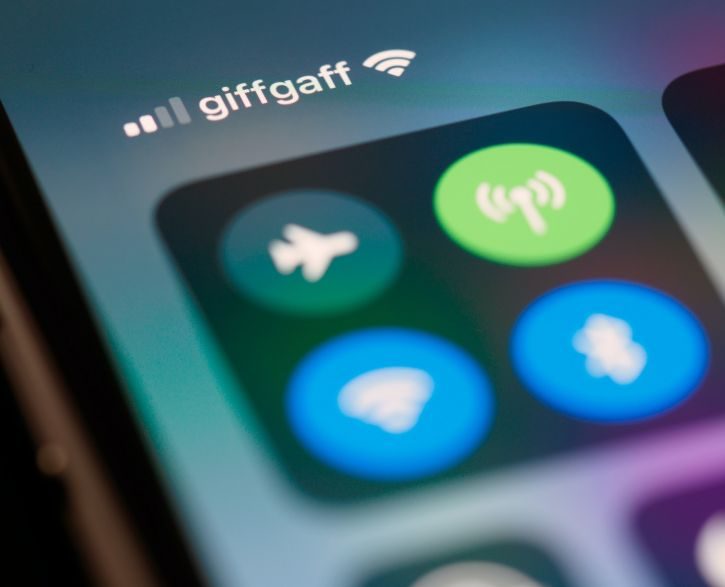
Bluetooth, LoRa
Bluetooth, LoRa, Zigbee
What interfaces and standards are typically used?
For short range applications in the units or tens of meters, these interfaces are the most common choices:
- Bluetooth / BLE: with a range of tens of meters to kilometers in a special design, decent speed (up to 2 Mbps), wide standardization of application protocols (audio, medical data transmission, etc.) and, above all, completely self-evident and seamless support in every mobile phone and good security. An interesting feature is the possibility of coarse position detection using the distance and angle between the transmitter and receiver.
- Wi-Fi and Wi-Fi direct: with significantly higher power consumption, but also higher transmission speeds than Bluetooth (even hundreds of Mbps). Compatible with TCP/IP computer networks, thus easily transferring data to and from the Internet.
- Proprietary protocols in the free ISM bands: allow very cheap implementations and the achievement of parameters (e.g. response speed) otherwise unsolvable.
Applications that communicate over longer distances between devices in the same system can use methods that employ appropriate code security or modulation tricks to increase range, allowing them to obtain higher radio range without necessarily increasing output power and thus power consumption, which is important for battery-powered devices. These include the LoRa or Bluetooth Long Range (Coded PHY) standards.
If we need to transfer data from the device to the Internet or communicate over distances of more than one kilometer, we use our own developed hardware for mobile networks (in the form of GSM or LTE or 5G connections) or modern Nb-IoT or LTE Cat. M at a lower cost.
Where only a minimal amount of data is transmitted to the Internet (for example, a water meter reading or a garbage can fill rate), IoT device networks with good coverage of most of the Western world will be an advantage.
- LoRa / LoRaWAN (which we can use for free under certain conditions using TTN’s open network – The Things Network or we can build our own “base station” – we operate one such base station in the TTN network),
- Sigfox (now apparently not viable).
We must not forget the so-called mesh networks, which allow to extend the range by passing messages between devices. Most of the standards have mesh extensions, for some standards it is a basic technology (especially Zigbee). However, the use of mesh networks usually leads to increased power consumption and reduced communication speed, so such systems must be designed carefully.
Another interesting technology is UWB – Ultra Wideband – which allows relatively accurate localization of devices in space by measuring the distance between elements of the radio network. It is mainly used indoors, while outdoors, the first choice is satellite navigation, e.g. GPS, possibly with refinement elements to achieve centimeter accuracy. Other frequently used indoor localization methods include localization using Bluetooth beacons (anchors).
What about atypical applications?
For demanding applications we design our own protocols.
One of the interesting applications we have implemented is a system consisting of a central unit with twenty to thirty portable devices that must be precisely time synchronized to tens of microseconds. The portable devices must be able to log on to the central unit, synchronise, maintain the connection in case of interference (by switching to another, uninterrupted channel) and roam between the central units. All this at ranges in the hundreds of metres and response speeds that are unfeasible with standard protocols.
What technologies do you use?
For Bluetooth-based devices we use Nordic Semiconductor chipsets (nRF, nRF5x, nRF52840) or Cypress/Infineon CyBLE and WICED.
We design Wi-Fi devices either using embedded Linux and basically any RF module, or based on ESP32 or ESP8266 chips. For specific price-sensitive applications, we use the Realtek RTL8722 chipset, which integrates 5 GHz Wi-Fi with advanced security (WPA3 including enterprise solutions) and a powerful microcontroller at a minimal cost, so that the entire application can be built on a single chip.
Are you looking for a solution for developing hardware and applications using Bluetooth and other similar interfaces? Our company is here for you!
Our teams of experts have extensive experience in developing solutions using technologies such as Bluetooth, LoRa, WiFi Direct, Zigbee and more. Whether you need to develop a new product or optimize an existing solution, we are here to help you achieve your goals.
We will develop or help develop the entire device, hardware and software. We also develop user-friendly applications that allow easy interaction with your products.
We help integrate new and existing systems into one coherent network. Contact us today to find out how we can help your business succeed in the digital world!
Interested in custom electronics design?
Do you need modern and reliable electronics? Outsource part of electronics design? Or you need a complete new product or system? Let us know! We are happy to help you with small and complex applications.
Our specialty
Bluetooth, LoRa is just one of our many specialties
Do you need modern and reliable electronics? For integration into your equipment or a complete new product or system? Get in touch with us! We will be happy to advise you with small and complex applications.

